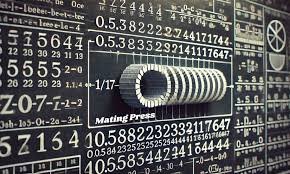
- Quick Answer:
The 300th digit of the repeating decimal 0.0588235294117647 is 7, as it corresponds to the 12th digit in the repeating block 0588235294117647.
Introduction:
Understanding repeating decimals is a fundamental concept in number theory. When we encounter a decimal like 0.0588235294117647, we notice that it repeats in a specific cycle. This article will explore the properties of repeating decimals, explain how to find the 300th digit in such a decimal, and delve into the mathematical significance of periodic decimal expansions. By following a step-by-step approach, we will uncover how this particular number behaves and how the 300th digit is calculated.
What is the 300th Digit of 0.0588235294117647?
Fractional Representation of 0.0588235294117647
The decimal 0.0588235294117647 represents a fraction. To understand its repeating decimal behavior, we need to express it as a fraction:
[
0.0588235294117647 = \frac{1}{17}
]
This shows that 0.0588235294117647 is a rational number, meaning it can be represented as the ratio of two integers. The fraction 1/17 produces this repeating decimal when divided.
The decimal repeats with a cycle of 16 digits: 0588235294117647. This repetitive sequence is critical for determining the 300th digit, as we can analyze its periodic nature.
Repeating Decimal Expansion
A repeating decimal expansion occurs when a fractional number has a set of digits that continue infinitely without end. For example, the number 0.0588235294117647 contains a repeating block of 16 digits: 0588235294117647. The periodicity of the number is essential because, once the repeating block is identified, we can determine any specific digit in the sequence without having to manually calculate each digit.
The key feature of a repeating decimal is its cyclical nature. In this case, the decimal repeats every 16 digits, which means the decimal block 0588235294117647 continues indefinitely.
Identifying the 300th Digit of 0.0588235294117647
To calculate the 300th digit in the decimal expansion of 0.0588235294117647, we need to understand its repeating structure. Since the repeating block is 16 digits long, we can find the position of the 300th digit by using modular arithmetic.
First, divide the position (300) by the length of the repeating block (16):
[
300 \div 16 = 18 \text{ remainder } 12
]
This means that the 300th digit corresponds to the 12th digit in the repeating block 0588235294117647.
Now, we examine the repeating block: 0588235294117647. The 12th digit in this block is 7.
Therefore, the 300th digit in the decimal expansion of 0.0588235294117647 is 7.
Mathematical Significance of Repeating Decimals
Repeating decimals are closely related to rational numbers, which are numbers that can be expressed as the ratio of two integers. Every rational number either terminates or repeats when expressed as a decimal. The number 0.0588235294117647, for instance, is a rational number because its decimal expansion repeats after 16 digits.
The 300th digit of the repeating decimal 0.0588235294117647 is a result of understanding this periodicity. Repeating decimals help mathematicians in understanding the infinite nature of rational numbers and their behavior when represented as decimals.
In addition, repeating decimals have practical applications in number theory, where they are used to simplify long calculations and make sense of periodic patterns in computations.
Applications of Repeating Decimals
Repeating decimals are found in many real-world applications. For example, in currency conversion, repeated decimals are common when converting between currencies, as some conversions result in non-terminating decimals. Similarly, scientific measurements sometimes yield repeating decimal expansions, and precision is essential in such contexts.
In algorithm design, repeating decimals are used to optimize calculations that involve fractions and ratios. The knowledge of repeating patterns aids in creating more efficient algorithms for processing these numbers in computations.
Currency Conversion
In currency conversion, decimals like 0.0588235294117647 are common when converting smaller denominations of currency into larger ones, or vice versa. These repeating decimals occur because the division does not result in a terminating decimal, and the cycle continues infinitely.
Scientific Measurements
In scientific measurements, repeating decimals may appear when performing calculations based on rational numbers, such as ratios of physical constants or certain standardized measurements. In these cases, knowing the repeating pattern allows for accurate rounding and precision.
Algorithm Design
In algorithm design, repeating decimals can be important for efficient calculations, especially when working with ratios and fractions. The ability to recognize repeating patterns enables developers to optimize computational processes in simulations or calculations involving rational numbers.
Conclusion:
The 300th digit of the decimal 0.0588235294117647 is 7, as determined by understanding the repeating block of the decimal and using modular arithmetic. Repeating decimals are an essential concept in number theory, providing insight into the behavior of rational numbers and their infinite decimal expansions. This understanding extends to real-world applications, such as currency conversion, scientific measurement, and algorithmic design, where precision and recognition of repeating patterns are crucial.
FAQs:
What is the repeating decimal of 0.0588235294117647?
The repeating decimal of 0.0588235294117647 is 0588235294117647, and it repeats indefinitely.
How do I calculate the 300th digit of a repeating decimal?
To find the 300th digit of a repeating decimal, divide the position (300) by the length of the repeating block (in this case, 16). Use the remainder to find the corresponding digit in the repeating cycle.
Why are repeating decimals important in number theory?
Repeating decimals are important because they represent rational numbers, and understanding their periodicity helps mathematicians analyze and simplify fractional expansions.
- Understanding the Complex Entity of Simpcity Forum: Content, Controversy, and Digital Footprint
- Nomurano: Origins, Meaning, and the Future of Collective Creativity
- Cool Last Names ideas
- Dirty Pick Up Lines: The Art of Flirty Banter That Teases, Tingles, and Charms
- Christmas Jokes: The Ultimate Guide to Holiday Laughter and Cheer




